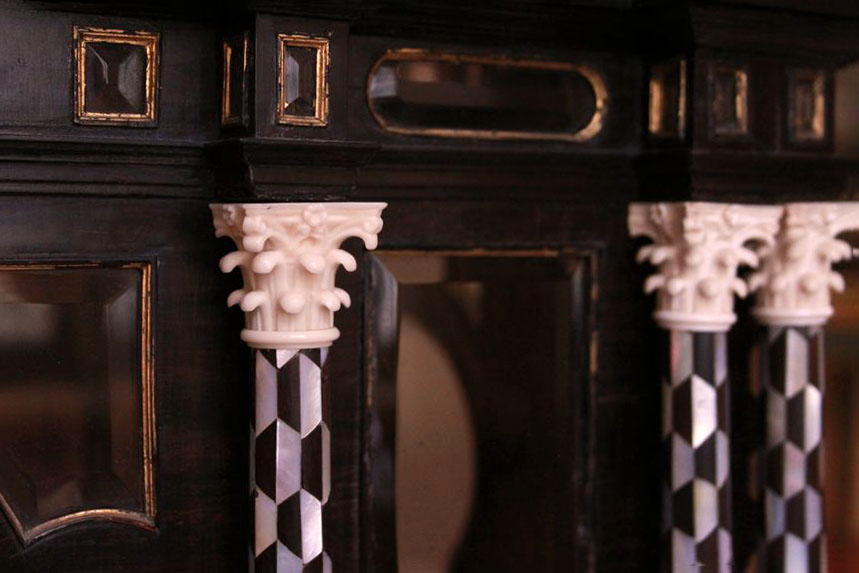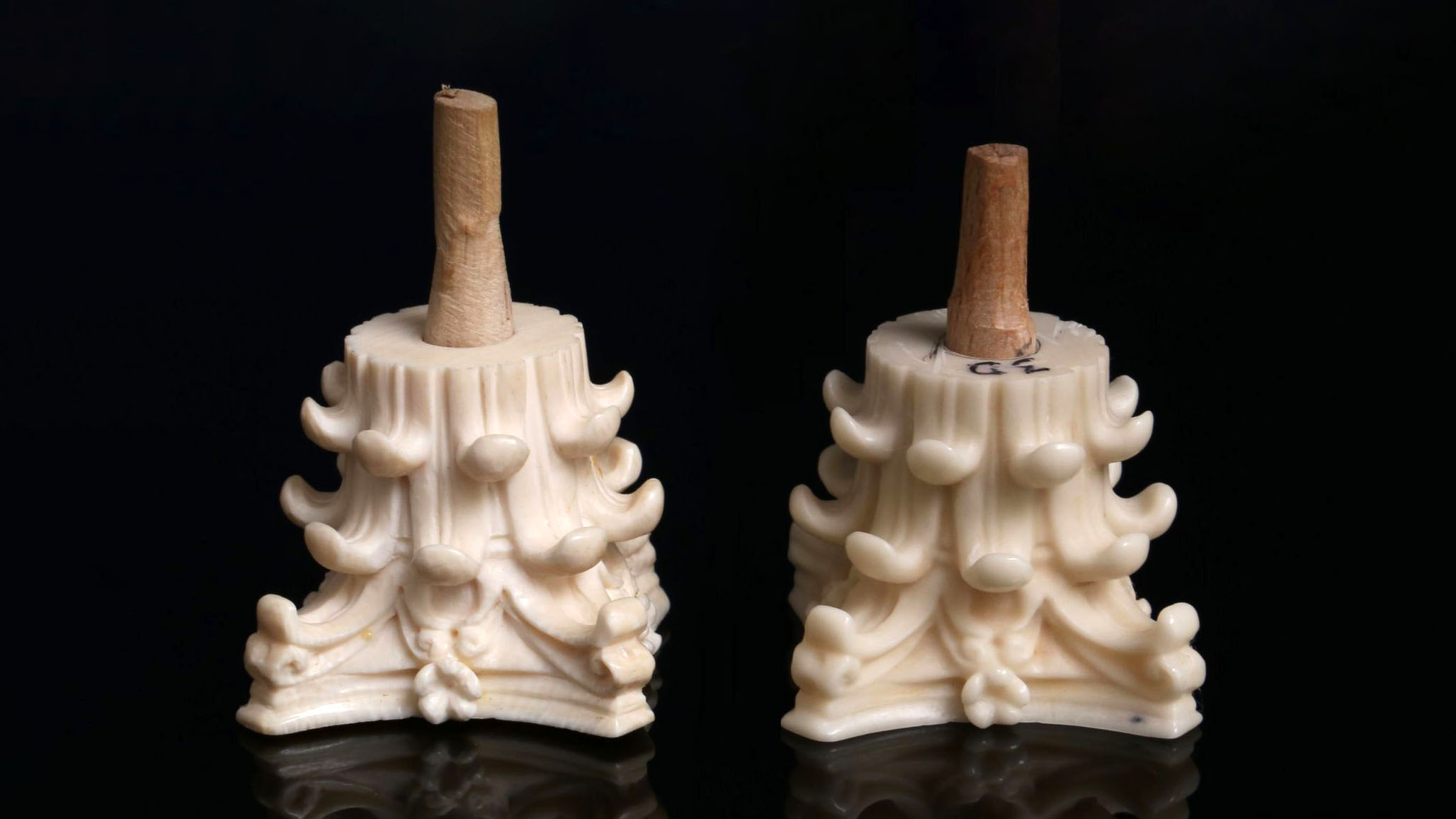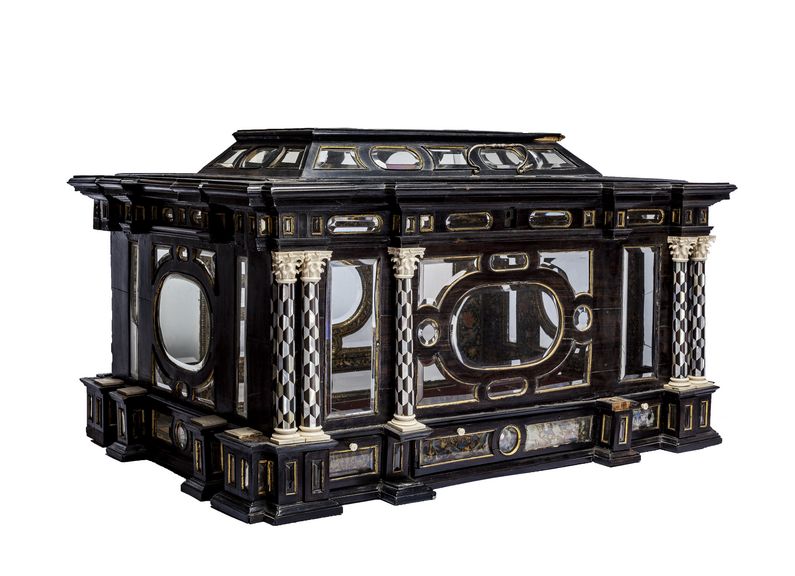
You’d be hard-pressed to think of a material that’s more contentious than ivory, the hard, white material most commonly taken from the tusks of elephants. Outlawed around the world since 1989, ivory continues to be an extremely valuable commodity, with poachers able to command $1,500 for a single pound of the stuff. In Keith Somerville’s mournful history of the subject, he refers to it as the “elephant economy,” and notes how — despite the ban — it has continued to drive elephants dangerously close to the point of extinction.
Today, there are just 400,000 elephants left in the wild, a population equivalent to the total number of humans who live in Tampa. Some experts predict they could be extinct within a decade.
Thaddäa Rath, at TU Wien, one of the largest universities in Vienna, Austria, finds ivory an intriguing material. “When you have a look at any museum’s collection of artifacts made of ivory, it is absolutely fascinating what people were able to produce — and what enormous tusks [they must have been able to work with],” Rath, who is a materials scientist, told Digital Trends. “Today, there are no animals left with tusks that reach the ground. I think the tragedy that lies behind the material is also part of the appeal.”
Unlike the people who have carved ivory by hand, Rath is interested in 3D printing with ivory. Or, at least, with an ivory-inspired material. Working with other investigators, she has helped develop an artificial ivory-like material called “Digory,” a portmanteau of the words “digital” and “ivory.” Made of synthetic resin and calcium phosphate particles, it’s processed in an extremely hot liquid state, and can then be hardened in a 3D printer using UV rays, printed to whatever shape is desired. Displaying similar optical and mechanical to real ivory, the Digory can then be polished up and color-matched so that it looks almost indistinguishable from the material it’s based upon. For an added aesthetic touch, black tea can be used to create the distinctive dark lines that run through real ivory.

Restoring the past
“It is not synthetic ivory, since the composition is different, but the color, the density, and the hardness are equivalent and it is workable with similar techniques as natural ivory,” Rath said. “It can be polished, carved, turned, drilled, or glued. However, since it is processed with additive manufacturing, the actual working time is reduced.”
The use case for the artificial ivory material is to restore the ivory parts of old art objects. Under international laws, people are able to buy or sell items that contain ivory so long as they were made before 1947 and contain less than 10% of the material based on volume. Ivory portrait miniatures that are at least a century old, or are especially rare or culturally important, are also exempt from the bans.

It’s a question that has all sorts of parallels in other walks of life: How should we regard something of cultural significance which was produced using means — or, in this case, materials and methods — we now find abhorrent? It is a difficult one to answer since, at least from a historical perspective, there is plenty that ivory was used for that we might now consider important to preserve. Or even, more controversial, of aesthetic value.
The Digory project began when Elena Holzhausen and Richard Addison, respectively a curator of historical monuments for the Archdiocese of Vienna and a restorer, were asked to restore a valuable 17th-century state casket — the so-called shrine of Friedrich III of Austria — in the parish church of Mauerbach. The casket was surrounded by 24 columns, with column capitals (the crown on top of the column shaft) made of ivory. However, 18 of these were missing. After failed attempts to use substitute materials to replace them, Holzhausen and Addison turned to Jürgen Stampfl, a Professor of Materials and Additive Manufacturing Technologies at TU Wien, to help.
His lab had previously 3D-printed dental reconstructions, and it seemed possible that they could help to 3D-print an elephant tusk as well. It turns out that they could.
Ethical questions abound
The query now is what happens next. Is it ethical to use a 3D-printed ivory substitute, possibly encouraging its wider usage? Could Digory help crack down on actual ivory poaching by offering a substitute that no animals have to be killed for? Could plentiful supplies of almost indistinguishable fake ivory drive down the cost of the real thing, thereby making it a less attractive proposition to poachers and smugglers? Should there be limits on its usage — namely only for restoring historical or culturally significant artifacts? There are no easy solutions.
“The initial application of Digory is the restoration and preservation of historical objects that were originally made of ivory,” Rath said. “However, through the use of additive manufacturing literally anything within the limits of [additive manufacturing] can be printed — especially any decorations or interior design, such as Christmas ornaments, door handles, or jewelry. It still is a beautiful material, but this way no animal has to give their life only [so] that we can have a decorative little white elephant standing in the living room. I would really like to believe that. Any use of poached ivory is unacceptable.”
A paper describing the work, titled “Developing an ivory-like material for stereolithography-based additive manufacturing,” was published in the journal Applied Materials Today.





